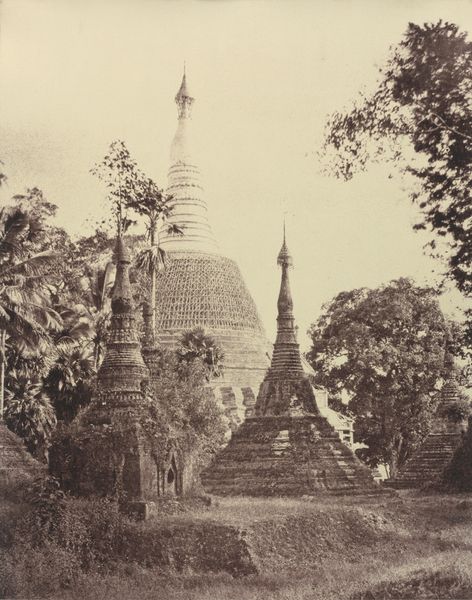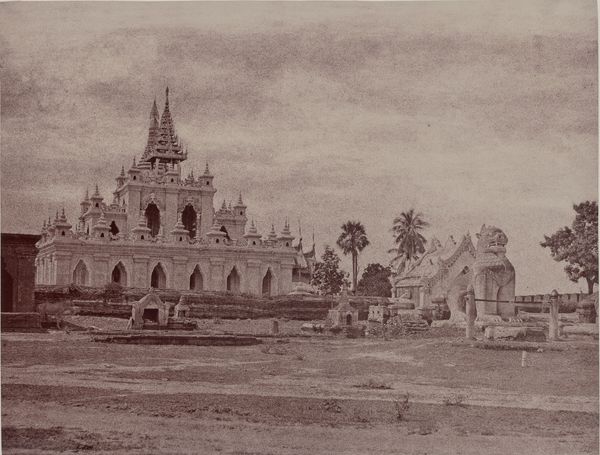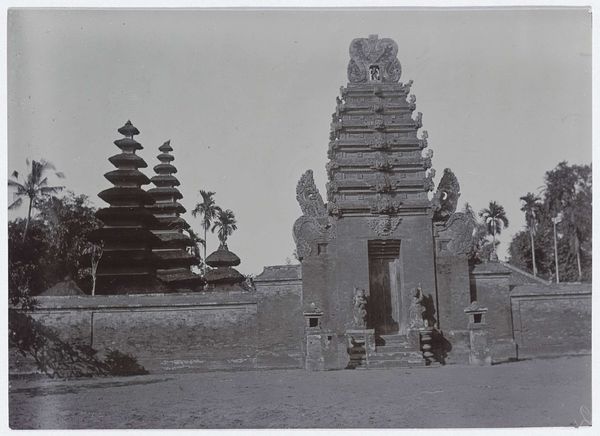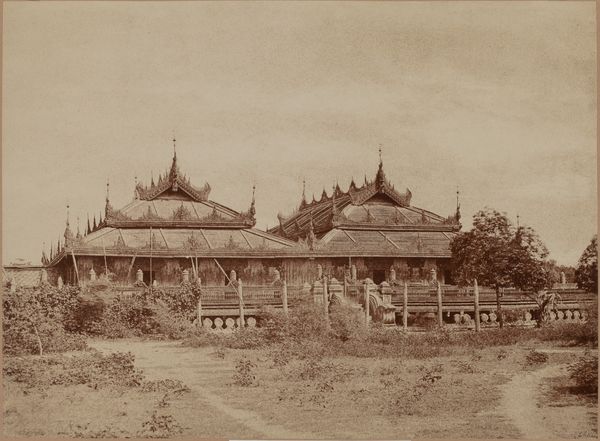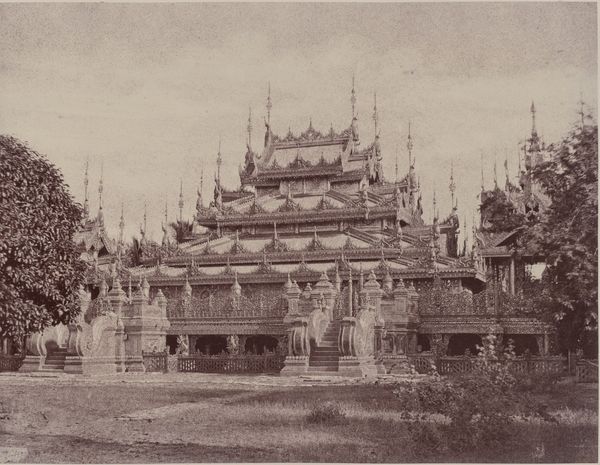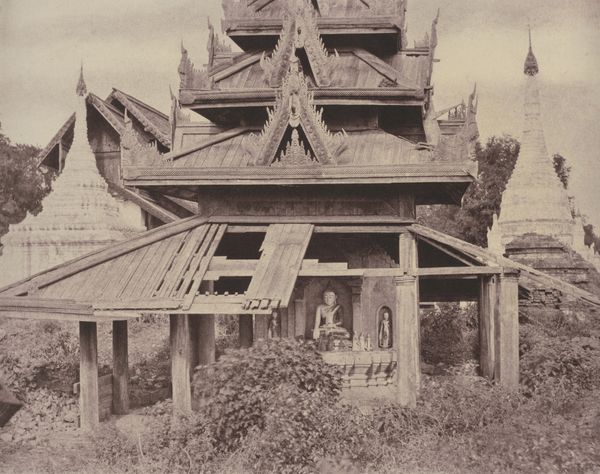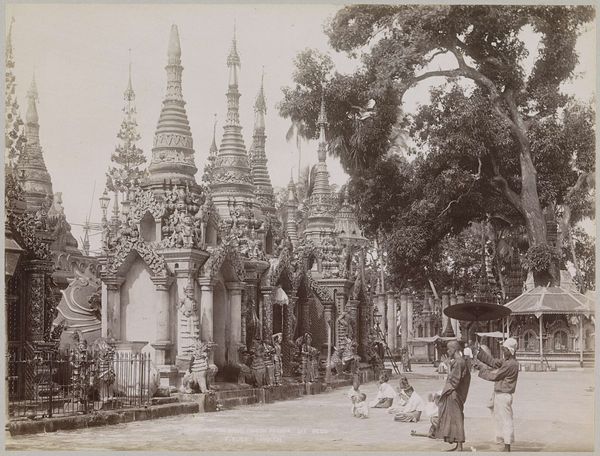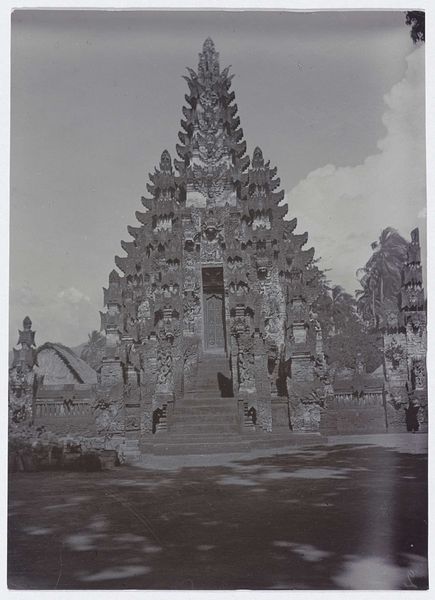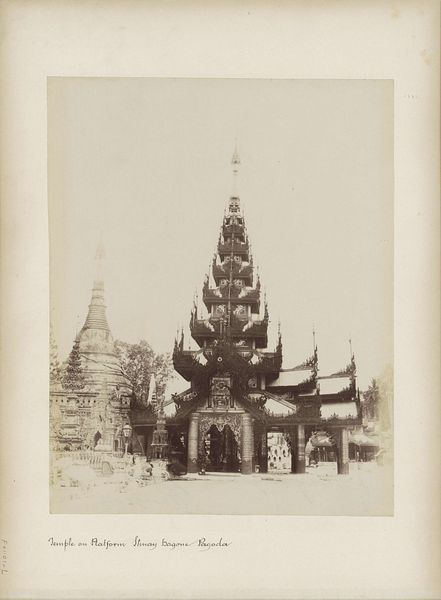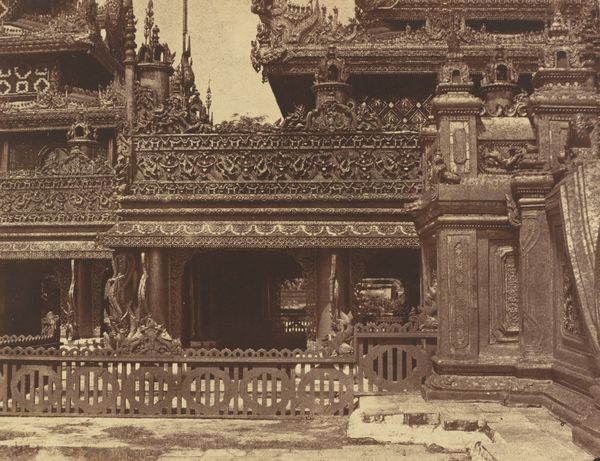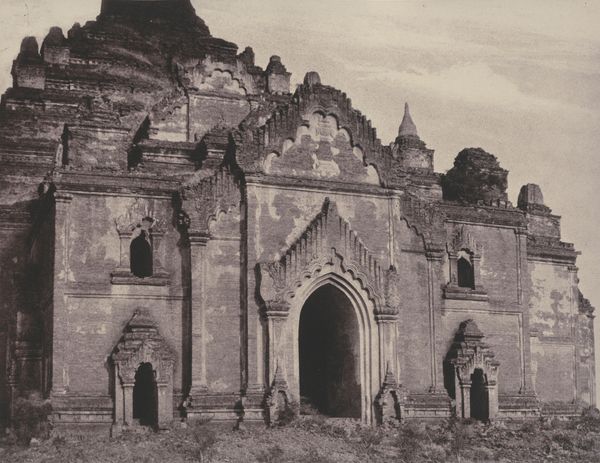
print, photography, architecture
#
statue
#
black and white photography
# print
#
asian-art
#
landscape
#
historic architecture
#
photography
#
ancient-mediterranean
#
monochrome photography
#
architecture
#
statue
#
monochrome
Dimensions: image: 25.5 × 34.2 cm (10 1/16 × 13 7/16 in.) mount: 45.6 × 58.3 cm (17 15/16 × 22 15/16 in.)
Copyright: National Gallery of Art: CC0 1.0
Editor: So, this is Linnaeus Tripe’s “Pugahm Myo: Entrance to the Shwe Zeegong Pagoda,” a photograph from around 1855. It's a beautiful monochrome print. It feels so serene and ancient, almost like stepping back in time. What captures your attention in this image? Curator: The photograph provides a vital lens through which to consider British colonial interventions and their impact on cultural heritage. Linnaeus Tripe, as part of the British East India Company, was not just documenting, but participating in a power dynamic. How do we reconcile the aesthetic appeal with the embedded colonial gaze that framed the narrative of Southeast Asia for a Western audience? Editor: That's a perspective I hadn't fully considered. I was mainly thinking about the artistic choices, the composition and how the light falls. Curator: The visual elements are strategic. Notice the scale and positioning of the pagoda, which seems to monumentalize imperial ambitions by capturing this ‘exotic’ place. By focusing on supposedly untouched ruins, the Empire reinforced a vision of cultural superiority, suggesting their stewardship was necessary. How does this interplay between image and implied power impact your understanding now? Editor: It makes me rethink the romantic idea of just a serene landscape. There's a whole story about power dynamics encoded in the image. It becomes a historical document, not just a piece of art. Curator: Exactly. Considering the social context is essential. These early photographs played a significant role in shaping Western perceptions. And while these images hold artistic merit, we must contextualize them within the framework of imperialism to really grasp their impact. Editor: Thank you! I’m definitely looking at it in a completely new way. It’s much more complex than I initially thought. Curator: Indeed. Recognizing these layers encourages more responsible and informed appreciation.
Comments
No comments
Be the first to comment and join the conversation on the ultimate creative platform.
